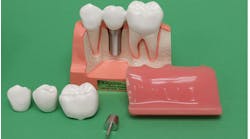Imagine that your practice is so productive that you decide to bring in an associate to share the workload. You have every intention of inviting this person to buy into your practice and become your business partner. Your associate is personable and professional, but months into their arrival, you have the disquieting sense that something has gone awry.
Instead of reducing your stress, the associate has magnified it. Now, you’re managing your employees plus the associate. Your workload and costs have increased without the payoff you were hoping for. Why did this go so wrong, and how can you fix it?
Here are three dental practices where the associate relationship has become rocky. What went wrong, and what can be done?
Dr. A: The oblivious associate
Dr. A is a happy-go-lucky, friendly associate at a pediatric practice. The owner-dentist was ecstatic to welcome him since she’s overwhelmed by her expanding patient base. But after a few months, the owner-dentist feels like she’s banging her head against a wall because the associate has only increased her workload and doubled her problems.
Dr. A automatically diagnoses sealants for every child without even looking at their charts, which has created some customer service issues that the owner-dentist then must repair. Dr. A seems unconcerned that his appointments invariably run over time, not only creating a backlog of waiting patients but also forcing employees to work into lunch or overtime. And despite repeated requests, Dr. A still hasn’t completed his surgery center credentials or learned how to use the laser, and he hasn’t even signed his employee contract.
Dr. B: The overconfident associate
Dr. B graduated from dental school three years ago and is smart and ambitious. Her primary goal is to repay her loans and buy into a practice. The owner-dentist brought her on board so she could have a supportive colleague to help her manage a large influx of patients.
Dr. B believes she has a great relationship with the team. But that’s not the team’s perspective. They see her as arrogant and intimidating and have privately agreed that if she buys in, they will leave en masse. They note that she’s callous with children, brusque with adults, and demeaning with employees. They even deem her clinical work subpar and bemoan the large number of cases that have had to be redone.
Dr. B has observed that the owner-dentist seems extremely stressed but attributes that to the owner-dentist’s personality. In fact, Dr. B’s main frustration is that the owner-dentist won’t give her a specific timeline on when she will be able to buy in. Dr. B has bills to pay, so she negotiated for a raise at the same time the employees got their salary reviews, but she’s resentful that her raise wasn’t more generous.
Dr. C: The overdiagnosing associate
Dr. C is a seasoned dentist who closed his own office in an upscale location and is now working as an associate in a blue-collar area to supplement his income. At his old practice, Dr. C regularly presented five-figure treatment plans to his affluent patients. At the new practice, most patients are blue-collar workers.
The patients are comfortable with their one-tooth-at-time treatment plans because they have other priorities. Dr. C, however, believes that these patients deserve and should want full-mouth rehab, so he creates large treatment plans to get these patients to his standards.
Dr. C expects that the front desk team will “close” these patients. He’s frustrated that they haven’t been successful, especially since his compensation depends on patient acceptance. Not surprisingly, the front desk team resents this. They don’t know how to respond to patients who are shell-shocked by their treatment plans, and they don’t have the time or expertise to sit with patients who are confused about why they suddenly need so much dental work. Sadly, some patients have left the practice because of this issue.
Why things went wrong and what to do about it
It would be tempting to blame the associates for these failing relationships, but, as the adage goes, it takes two to tango. There are several reasons these relationships are struggling.
None of the dentists prepared for these relationships. The owner-dentists assumed their associates would have similar clinical philosophies and work styles, so they didn’t have meaningful contracting conversations with them before they hired them. This meant that no one had any insights into one another’s clinical skills, personal goals, or communication styles. The vetting process had focused on likeability and availability. This is like marrying someone because they seem nice and they’re single. If you’re considering hiring an associate, interview each other with in-depth questions and negotiate how you’ll bridge differences before their first day.
In each case, the owner-dentist was wary about providing timely, consistent, candid feedback. Now that things have gone awry, you would think that the owner-dentist would be meeting regularly with the associate to share their concerns and reorient the relationship. That’s what should be happening, but many dentists find it difficult to give candid feedback, especially to other dentists. So, for the most part, these owner-dentists are suffering in silence or couching their feedback in such vague terms that the associate is unaware of the seriousness of the issues.
You may also be interested in ... Do dentists have a self-esteem problem?
It’s a harsh realization, but some dentists seem willing to tolerate losing patients and potentially employees rather than giving their associates direct feedback and holding them accountable. But consider this: would you ignore a patient’s growing dental problems for years until the patient suffered severe consequences? Feedback is like preventive maintenance; it can both prevent and protect. Dentists and associates need to have weekly meetings so that they can be aligned in clinical and practice management.
Some associates perceive themselves as employees rather than as potential business-owners. There is an old piece of career advice that says you should dress and act to reflect the job you want rather than the job you currently have. Owner-dentists resent associates who seem oblivious to the practice’s challenges, especially if their perception is that the associate is acting more like an entitled employee rather than a collaborative partner.
If you’re an associate and you want to become a partner, recognize that you’re actually on a very long job interview. Demonstrate that you understand and can shoulder the burdens of owning a small business. Be extremely observant about the philosophy and norms of the practice, because the owner-dentist is looking for someone who fits in—not someone they need to reign in. Ultimately, you must prove that you can reduce the owner-dentist’s stress and provide a return on their investment.
My final advice: Before you look for an associate, identify the skills and qualities you want this person to embody. Hire someone who has a complementary work style and a skill set that will expand your practice. And then engage in continual conversations so you can build a successful relationship that leads to a successful partnership.
Editor's note: This article appeared in the July 2023 print edition of Dental Economics magazine. Dentists in North America are eligible for a complimentary print subscription. Sign up here.









